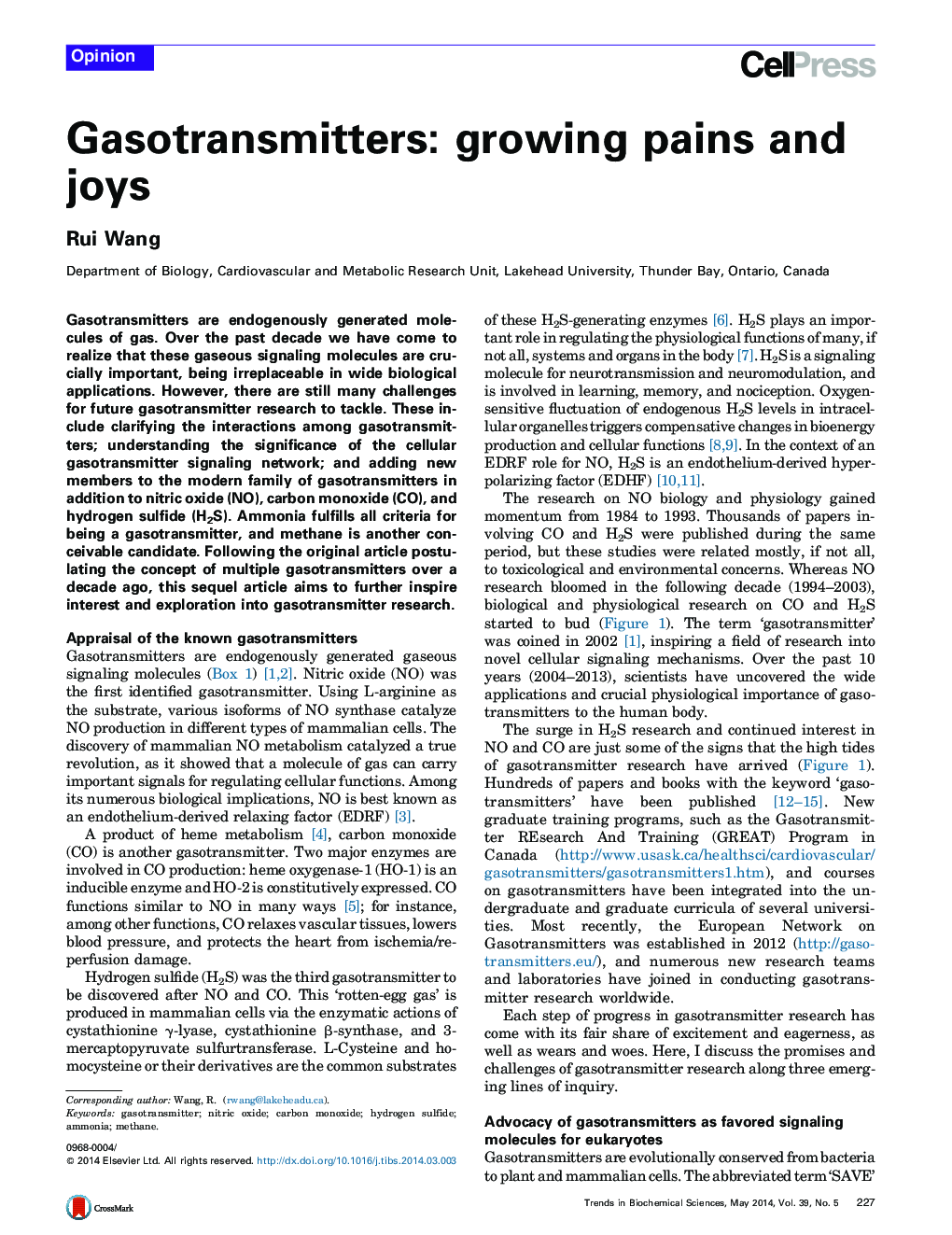| Article ID | Journal | Published Year | Pages | File Type |
|---|---|---|---|---|
| 2030741 | Trends in Biochemical Sciences | 2014 | 6 Pages |
•Gasotransmitters (NO, CO, and H2S) are biologically irreplaceable.•Interactions among gasotransmitters are complex and interweaved.•Ammonia and probably methane, but not H2, should be qualified as new members of the gasotransmitter family.
Gasotransmitters are endogenously generated molecules of gas. Over the past decade we have come to realize that these gaseous signaling molecules are crucially important, being irreplaceable in wide biological applications. However, there are still many challenges for future gasotransmitter research to tackle. These include clarifying the interactions among gasotransmitters; understanding the significance of the cellular gasotransmitter signaling network; and adding new members to the modern family of gasotransmitters in addition to nitric oxide (NO), carbon monoxide (CO), and hydrogen sulfide (H2S). Ammonia fulfills all criteria for being a gasotransmitter, and methane is another conceivable candidate. Following the original article postulating the concept of multiple gasotransmitters over a decade ago, this sequel article aims to further inspire interest and exploration into gasotransmitter research.
